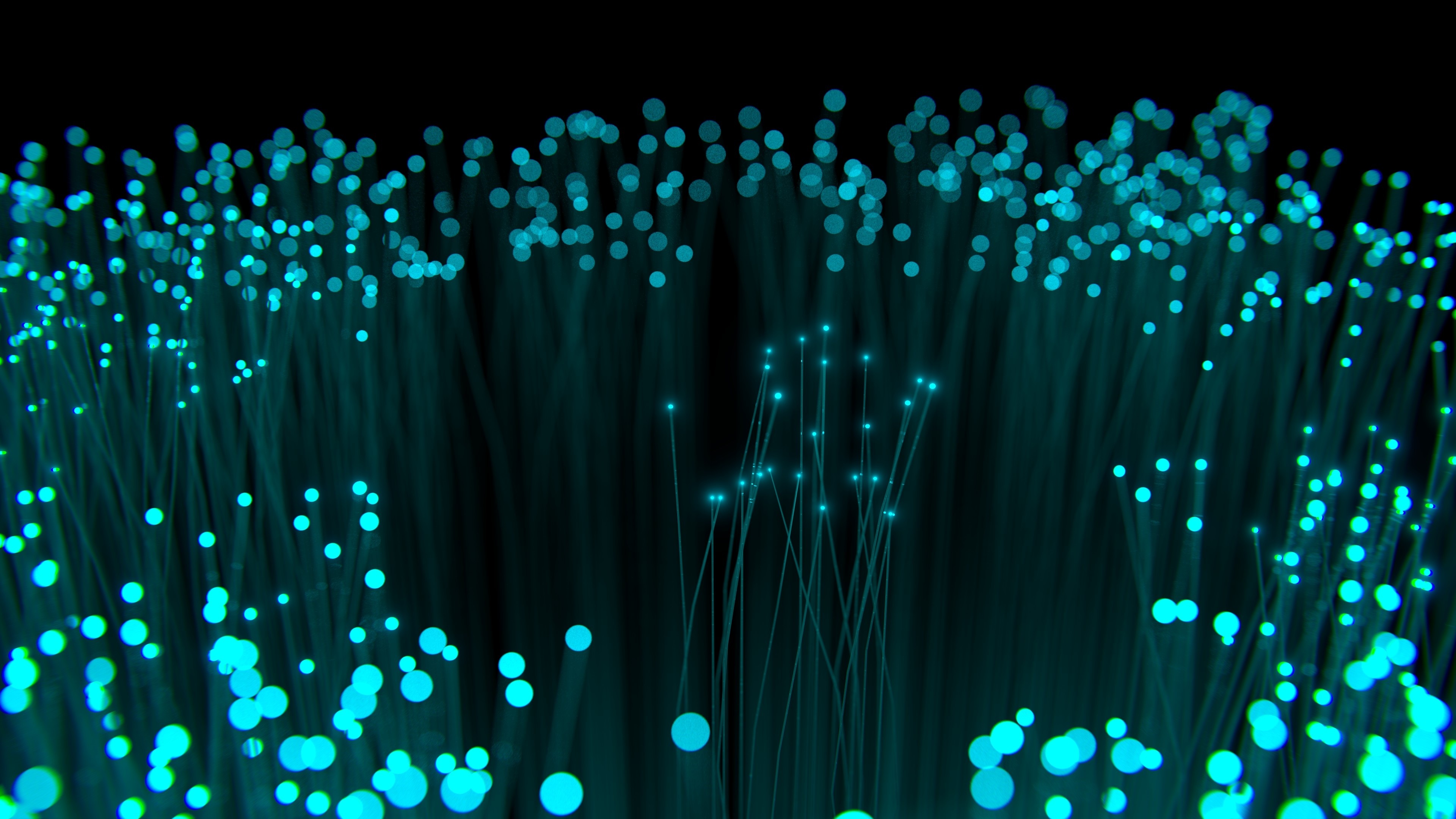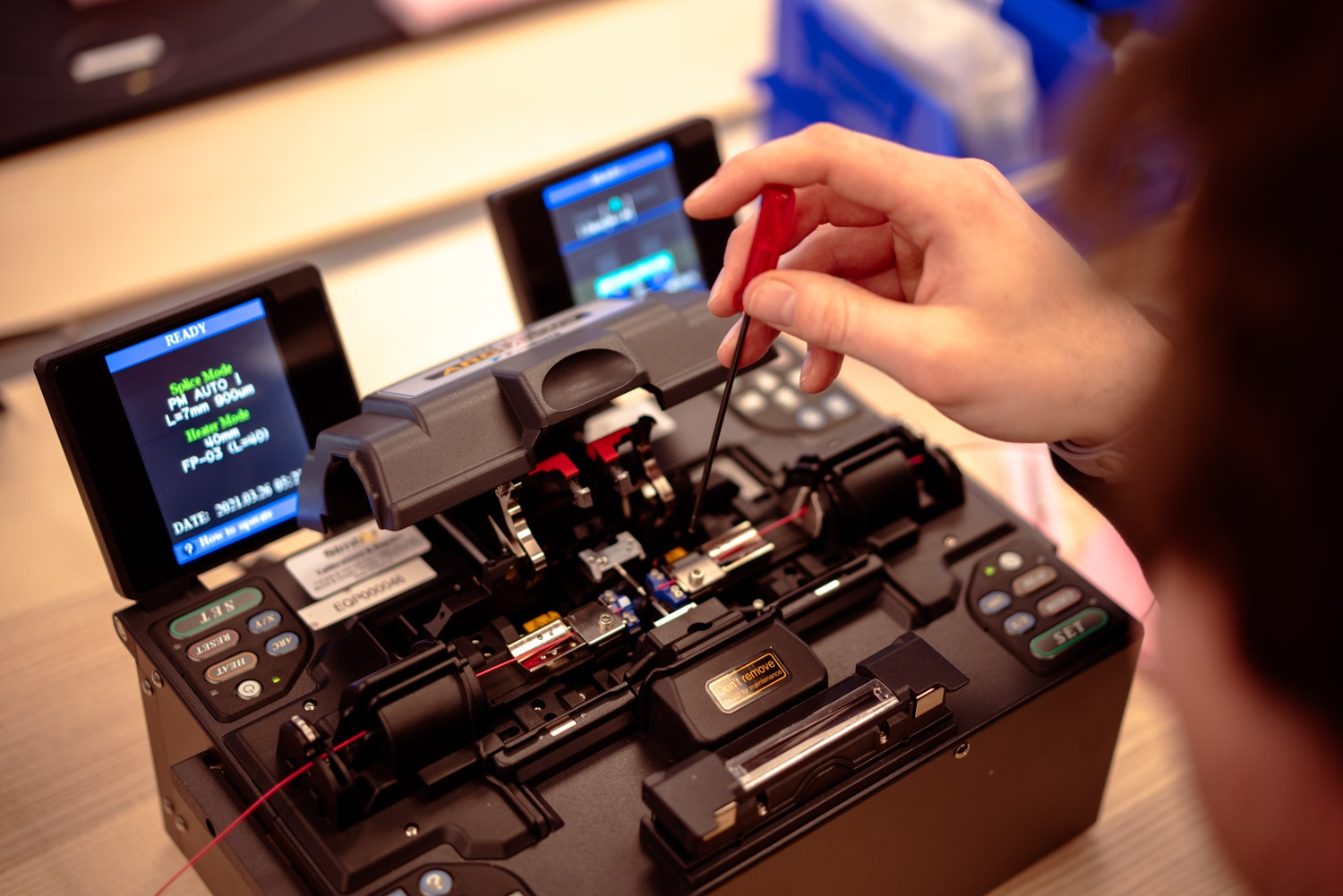Optical fibers are made from either glass or plastic, and most are about as thin as a human hair. Fibers may be many miles long and are considerably lighter than traditional metal wire.
Optical fibers are most often employed to transmit light between the two ends of the fiber and are now widely used in long-distance telecommunication, short-distance network communications, and remote sensing, where the fiber is the sensor itself or is used to connect a sensor to a measurement system.
In fiber optics, there are three types of optical fiber: Single Mode, Multi-Mode Step Index and Multi-Mode Graded Index. In this article we review the features of each type and discuss which applications are best suited to which fiber.
And for an in-depth overview of the characteristics and construction of optical fibers, see our article on Fiber Optic Principles. (link)
Types of Fibers
There are three main types of optical fiber: single mode fiber (SMF), multimode (MM) graded index, and multimode (MM) step index.
Single Mode Fiber (SM, SMF)
An SMF, also known as fundamental- or mono-mode, is an optical fiber designed to carry only a single mode of light, the transverse mode.
Because the SMF only transmits one mode, modal dispersion (the primary cause of pulse overlap) is eliminated. As a result, the bandwidth is much higher with an SMF than that of a multimode fiber. Because of this higher bandwidth, SMFs are used in all modern long-range communication systems. Typical core diameters are relatively small since there is only one path the light can travel down; between 5 and 10 µm, depending on wavelength.
Multimode (MM) Graded-Index
Both graded and step index fibers use refracted or reflected light.
The MM graded index’s refractive index is higher at the axis of the core and then decreases gradually towards the core-cladding interface. As a result, the light travels faster at the edge of the core than in the center. Different modes travel in curved paths with nearly equal travel times. This greatly reduces modal dispersion in the fiber.
Graded-index fibers have bandwidths which are significantly greater than step-index fibers, but still much lower than single-mode fibers. Typical core diameters of graded-index fibers are 50, 62.5, and 100 µm. The main application for graded-index fibers is in medium-range communications, such as local area networks.
Multimode (MM) Step-Index
The MM step-index operates on the principle of total reflection and causes light to travel across the core in a zigzag pattern.
Graded-index multimode fibers are used for data communications and networks carrying signals across medium distances - typically no more than a couple of kilometers, while step-index multimode fibers are mostly used for imaging and illumination (i.e., short distances).
Polarization Maintaining (PM) Fiber
Polarization Maintaining (PM) fiber is an SMF that maintains two polarization modes by intentionally inducing uniform birefringence along the entire fiber length. PMs have a fast axis and slow axis, which is important when the input polarization needs to be maintained in the fiber. Normal SMFs carry randomly polarized light, whereas PM fiber is designed to propagate only one polarization of the input light.
PM fibers have various applications in specialized fields. They are commonly employed in areas such as fiber optic sensing, interferometry, and quantum key distribution. In the telecommunications industry, they are particularly useful for connecting a source laser to a modulator because modulators require polarized light as their input, and PM fibers help maintain the desired polarization of the light during transmission.
How PM Fibers Maintain Polarization
PM fibers have stress elements integrated into their cladding, which breaks the fiber's symmetry. This allows the fibers to guide light in two perpendicular polarization states called the fast and slow axes. When linearly polarized light is coupled into one of these axes, the polarization is preserved as it travels through the fiber. Usually, the linearly polarized laser light is coupled into the slow axis because it is less affected by bending of the fiber.
If light is coupled into both axes, the resulting polarization becomes elliptical, unless the coherence length of the light source is longer than the phase difference. Changes in strain and temperature can alter this elliptical state, so it is crucial to align the polarization axis of the laser source precisely with the polarization axis of the fiber.
Stress-Birefringement Fibers vs. Form-Birefringement Fibers
In stress birefringent fibers, the birefringence is created as a consequence of the addition of two stress applying parts (SAPs) at opposite sides of the core in the cladding of the fiber. Most applications use the slow access exclusively and are widely seen in the telecom and sensor industries.
Form-Birefringement Fibers possess a highly electrical core. Its high levels of attenuation and lack of compatibility make them unsuitable for telecom use. However, they do prove useful in some types of sensors.
PM Fiber Shapes
Most PM fibers used today have one of three birefringement geometries (shapes); PANDA, Bow-tie or Elliptical Clad. They all belong to the family of stress-birefringement fibers and are designed based on the specific geometry of the stress elements integrated into the fiber’s cladding.
All three shapes work in the same way. The cores are wrapped around high-expansion glass that shrinks back more than the surrounding silica, thus keeping the core in tension. This tension creates birefringence, meaning it causes indices of birefraction. The greater the applied stress, the greater the difference in propagation constant between the slow and fast axis and the higher the birefringence.
Most application use the slow axis exclusively.
Bow-Tie
A highly birefringent or HiBi SAP fiber where the stress across the core is created by the addition of two bow-tie shaped stress applying parts (SAPs) in the fiber cladding at opposite sides to the core. The exact shape of the bows, their composition, and separation to the core can be modified during the manufacturing process, so different levels of birefringence are delivered.
PANDA
PANDA PM fibers are designed with high performance properties, including excellent birefringence and low attenuation.
PANDA and bow-tie geometries are the most widely used, as they are preferred by many manufacturers of gyros, other sensors, and telecom components.
Elliptical Clad
If the light is polarized in a way that the electric field aligns with the major axis of the elliptical core, the light experiences a higher refractive index compared to when it aligns with the minor axis. As a result, this alignment is known as the slow axis because the light takes a little longer to travel through it.
The Right Type of Fiber for You
All Dayy Photonics light sensors come with a fiber connector. To learn more about what fiber is right for your application, contact us to talk about the specialized needs in your industry.


